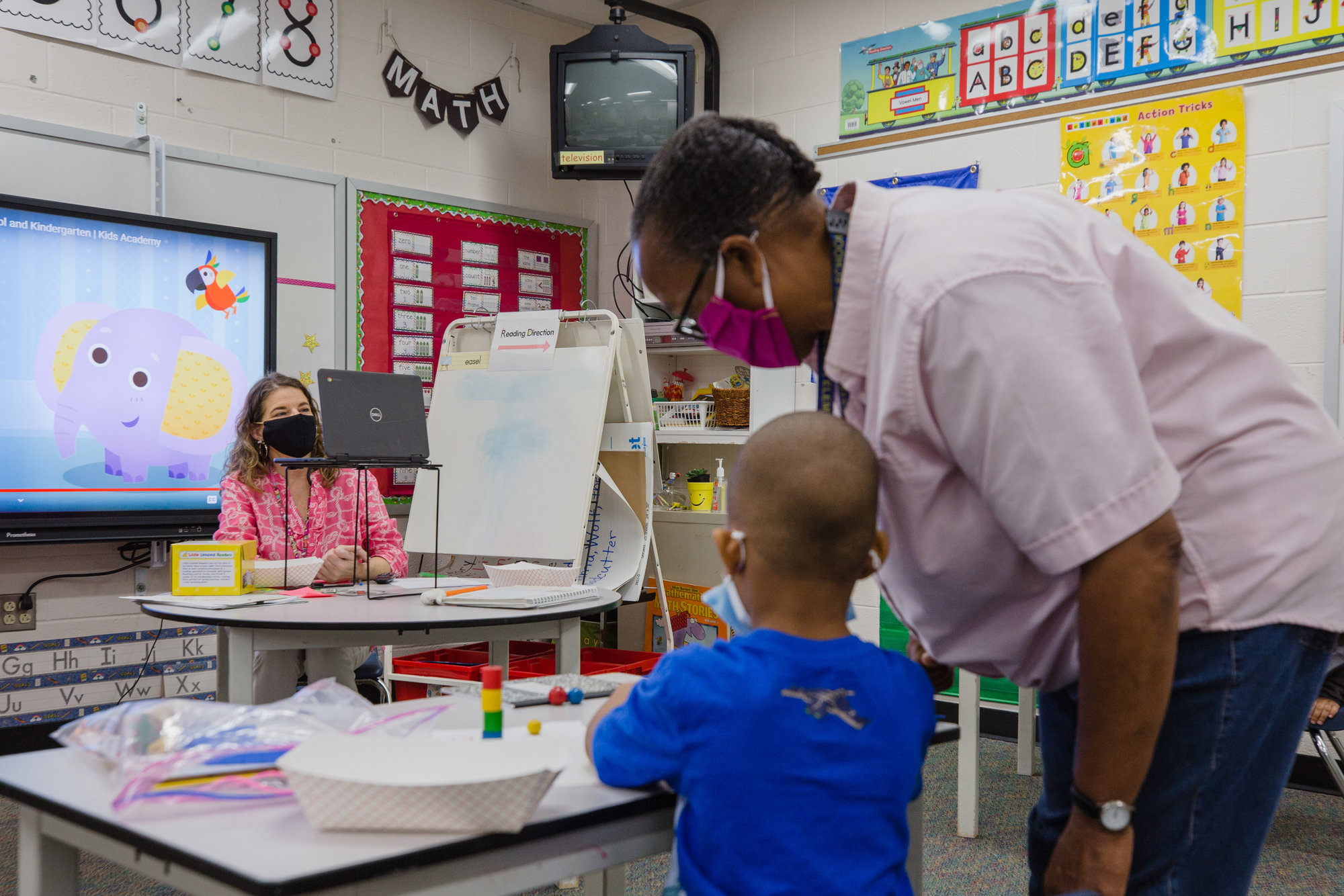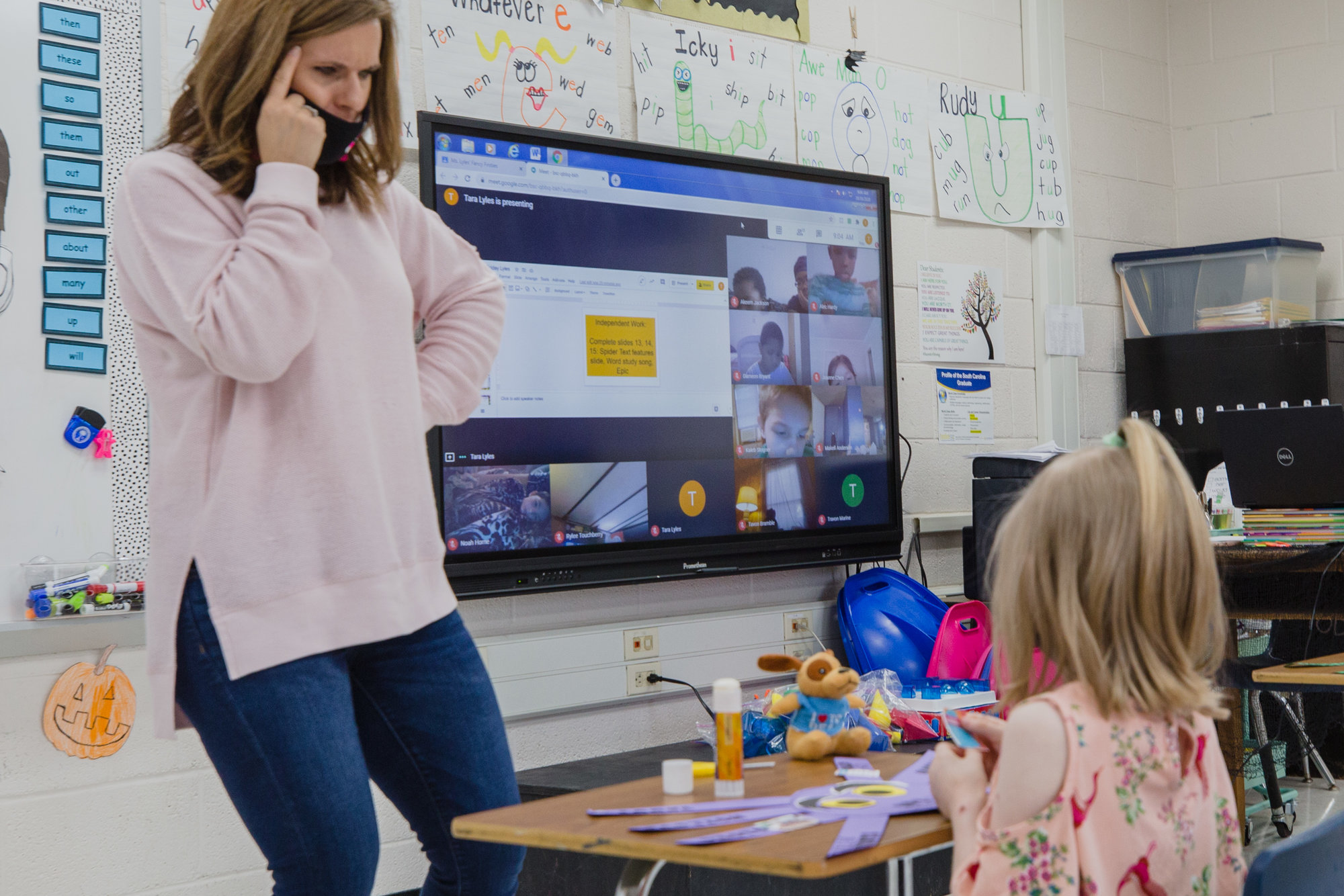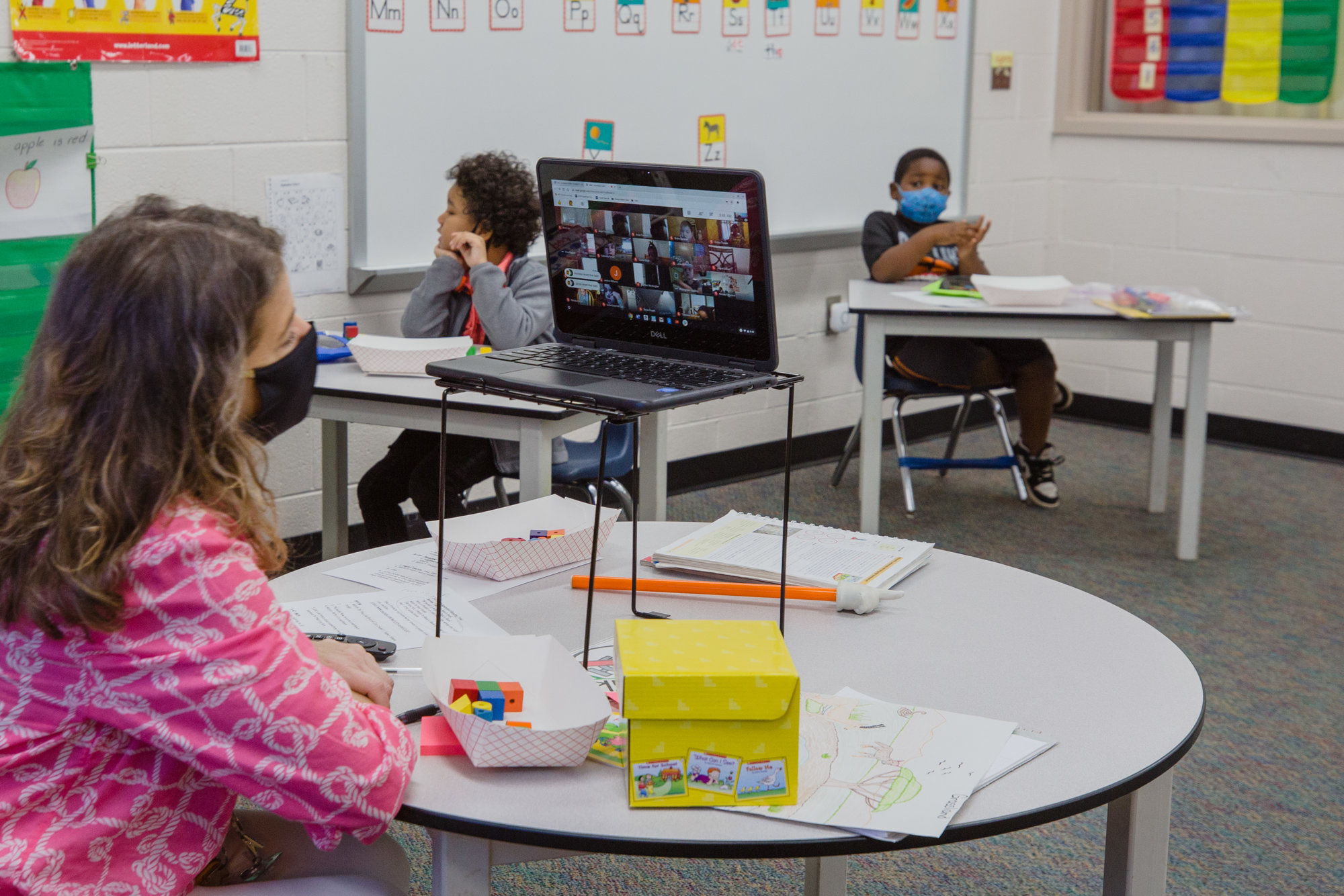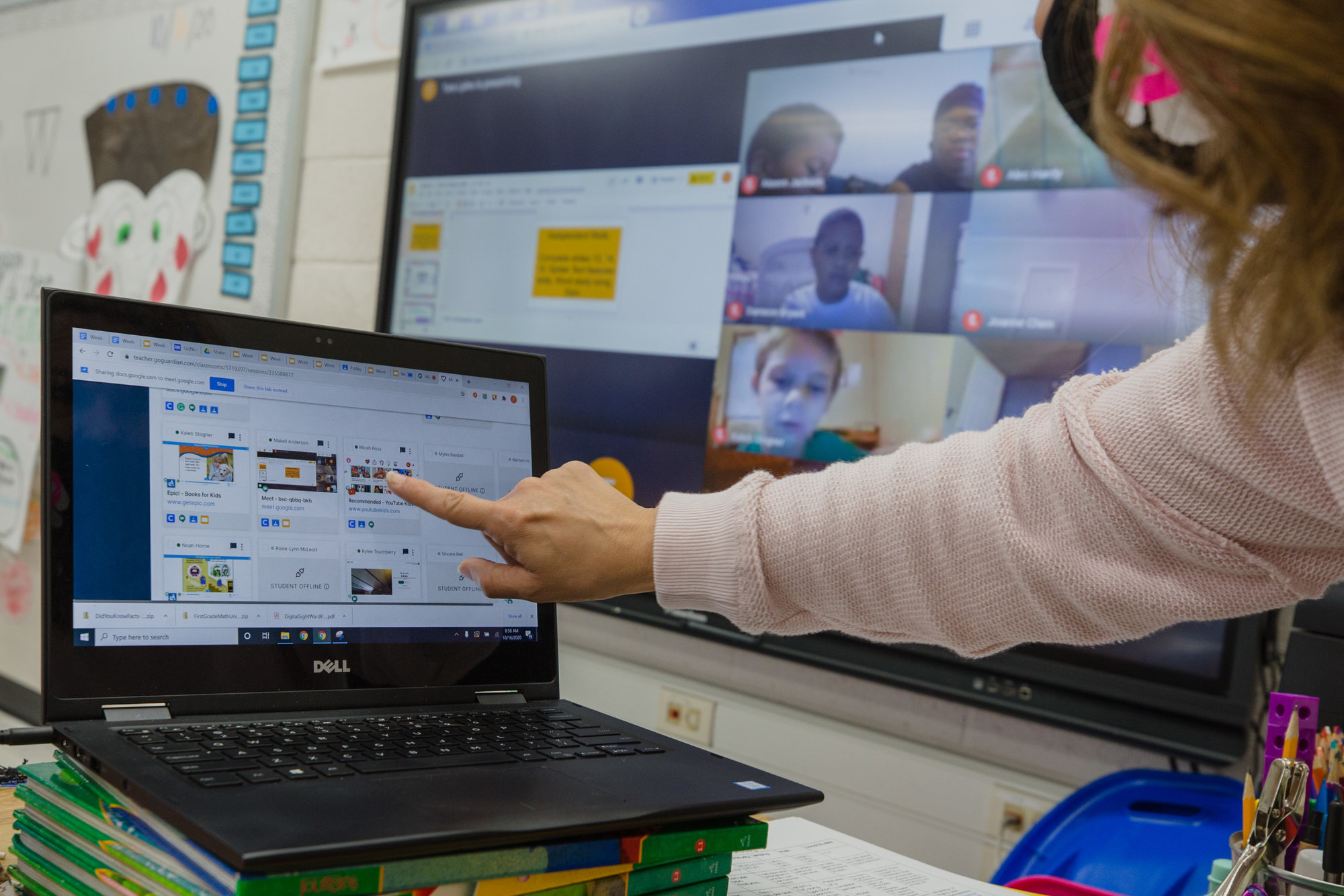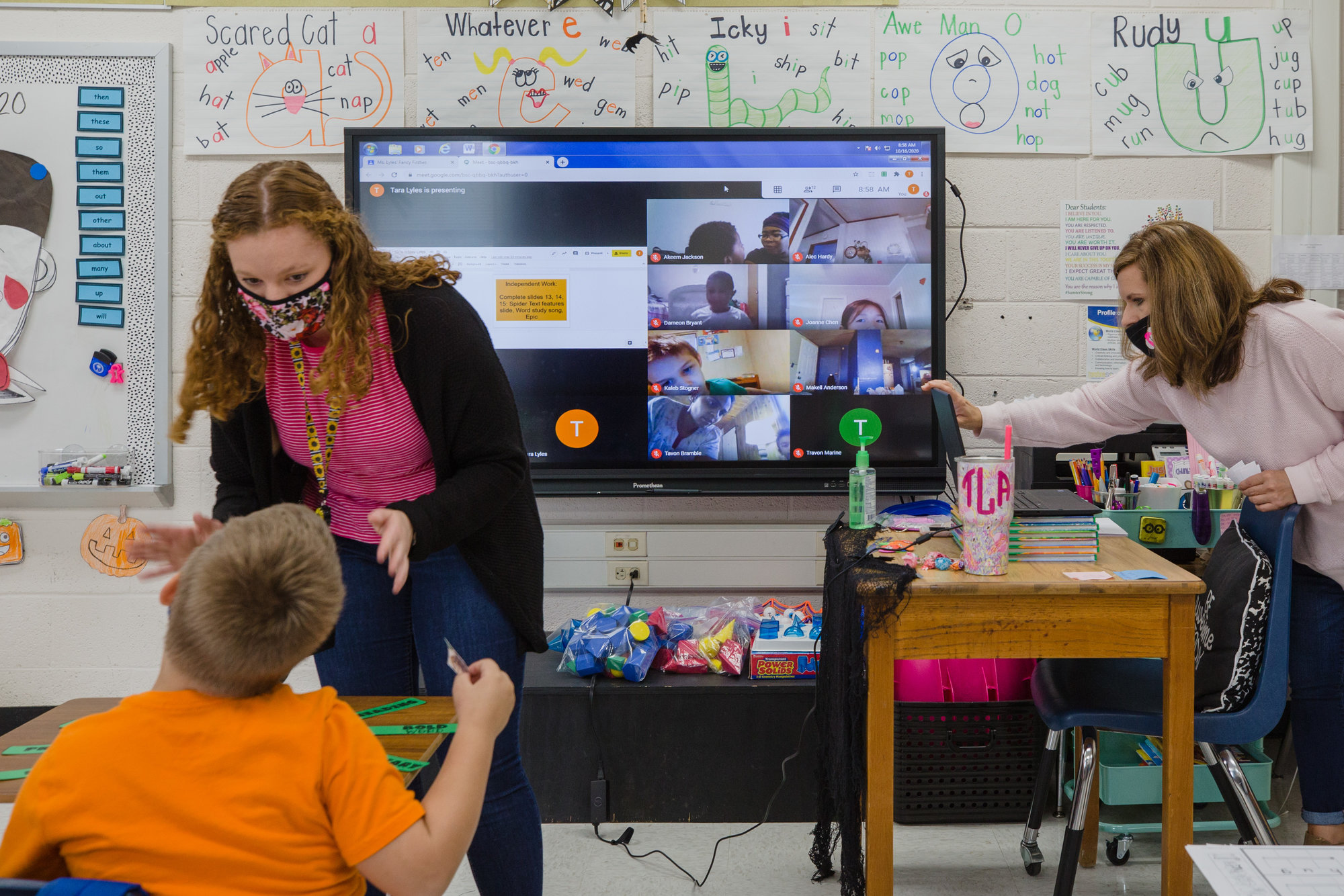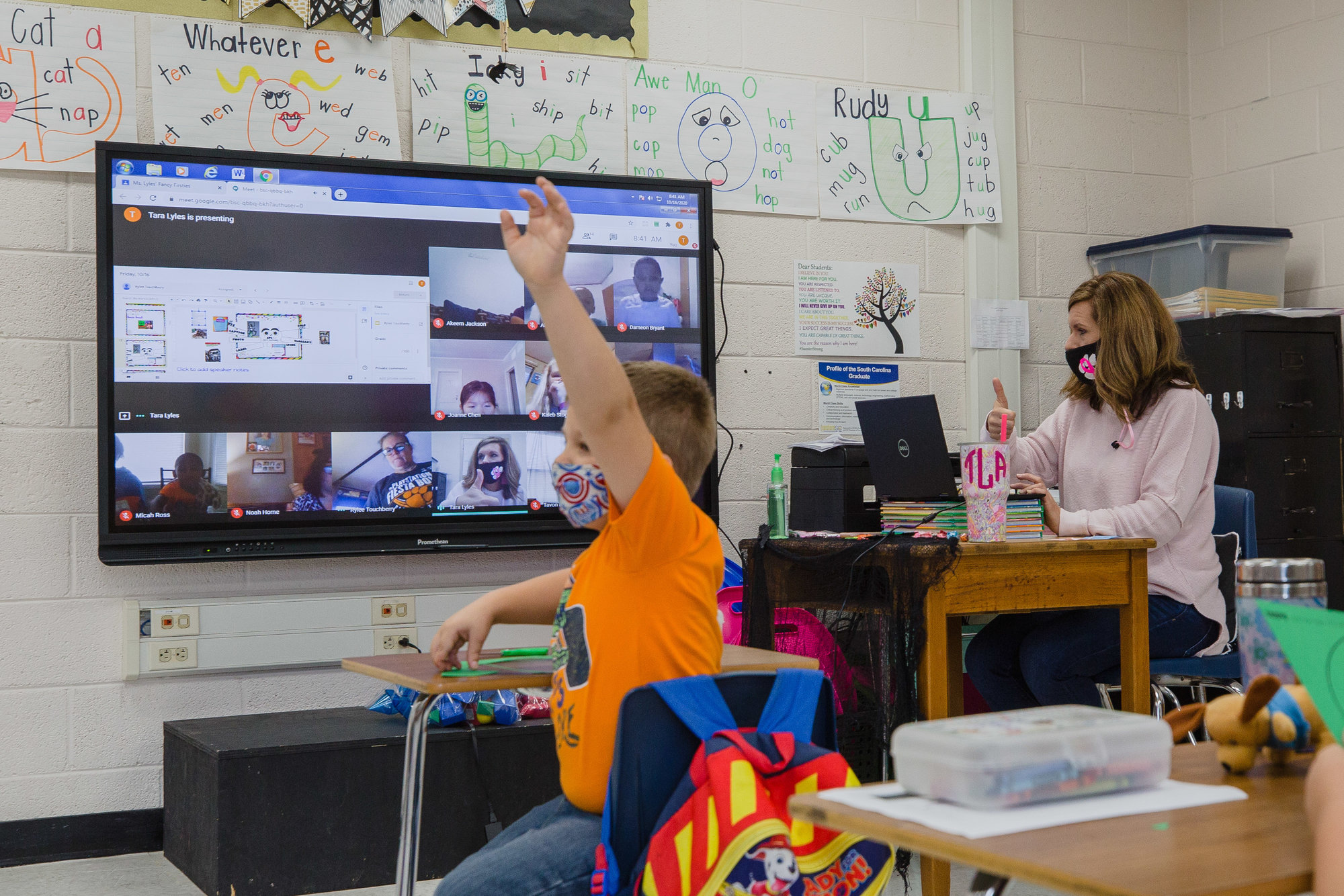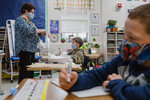Hybrid teaching in Sumter School District: 'A day-to-day thing'
Teachers navigating the virtual and in-person classroom with flexibility
Phase 2: Monday, Oct. 26 - Grades 2, 3 and 6 and high school cohort 1 (last names A-L)
Phase 3: Thursday, Nov. 5 - Grades 4, 5 and 7 and high school cohort 2 (last names M-Z)
Phase 4: Thursday, Nov. 12 - Grade 8 and both high school cohorts (all high school students)
Note: Phases 3 and 4 are tentatively scheduled and will be based on schools' COVID-19 rate data from DHEC
Source: Sumter School District
bruce@theitem.com
PINEWOOD - Inspiring young minds has always been considered hard and noble work, but for virtual/hybrid learning in the COVID-19 realm, the challenge has reached new heights.
A pair of elementary school teachers and the principal at Manchester Elementary School spoke Friday about the various skills, technology, inner drive and (don't leave out) the grace involved with being a virtual/hybrid teacher in 2020.
Since teachers returned to work two months ago on Aug. 17, in Sumter School District they have received professional development in technology until their eyes have squinted, but it's all been part of the process to ensure students sitting at home have received effective instruction.
After a month of fully virtual learning, the district's youngest students - pre-kindergarten, kindergarten and first-graders - and those who receive supplemental supports in all grades are now in their third week of hybrid/blended learning. In that model, schools divide elementary-grade students into two groups for two days of face-to-face classroom instruction and two days of virtual, live learning to keep in-person classroom sizes low.
That means four days per week, elementary school teachers are responsible both for kids sitting in the classroom and those learning online simultaneously.
Manchester Elementary is adapting to the hybrid model with a team approach and an extra set of hands in each classroom, according to Principal Joan Tye.
Joining first-grade teacher Tara Lyles in the classroom is the school's behavior interventionist, Ivy Benenhaley.
Lyles explained she might start the day with a hands-on approach with the face-to-face students in the classroom, while Benenhaley leads an activity with virtual students on their Chromebooks.
Then, they might rotate, and Lyles does live activities with the students online.
With just a couple weeks of hybrid learning under their belt, the team-teaching approach has required flexibility and trial and error, Lyles said.
"Sometimes, it's a day-to-day thing," she said. "'OK, this didn't work so well yesterday. Let's do this differently, and we will figure it out as we go.'"
Teachers can talk and chat with students online and even see if their screens at home are not on the right website.
Tye added her teachers are constantly having to think outside the box and problem solve, given the large-scale technology additions in the classroom.
Fellow teachers are helping ensure all the school's teachers have the technology they need to be successful. Tye calls them the school's "technology wizards."
One is fifth-grade teacher Kelly Carlisle.
She said some challenges in virtual instruction are factors she can't control, such as noise in the background in a child's home.
That can require a good bit of patience, but Carlisle said she still wants to demand the best of her students.
Motivating students online is also a challenge, but she got creative with an incentive program through her Amazon account.
"I put all of their addresses in my Amazon account," Carlisle said. "So, all their home addresses are there, and as they earn prizes and work toward rewards they are just a click away. So, they are loving getting those packages in the mail."
All the work and trying to be creative can be time consuming, the teachers said.
Most teachers "enjoy a good challenge," Carlisle said, but factors beyond their control that curtail instruction can become frustrating.
One silver lining, Tye, the principal, said, is teachers have already contacted all students' parents in the K-5 school. In her eighth year at Manchester, Tye doesn't think that's happened before by this time in the school year.
Because teachers are in "uncharted territories" with technology and with all the extra hours they are putting in, Tye said she thinks her job is to try to lessen some of the administrative load on her teachers.
"What I try to do is not cause them any additional stress," she said. "That's what we are trying to do. I don't walk in a teacher's shoes, so I don't know what they need. But, I try my best not to burden them with anything that is not necessary for them to do other than teach."
More Articles to Read

